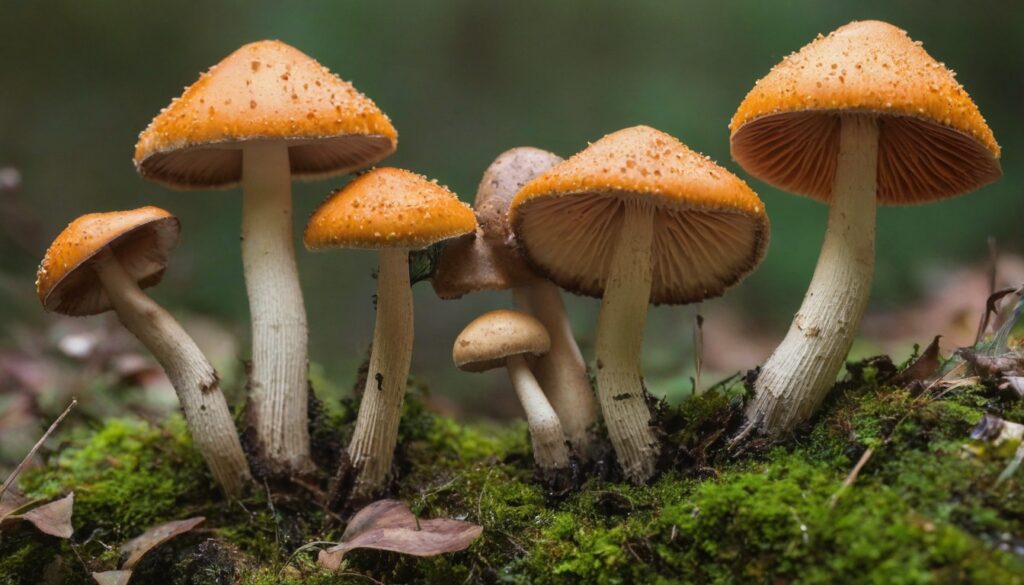Welcome to our comprehensive forager’s guide to the vast variety of Vermont edible mushrooms. In this guide, we will take you on a journey through Vermont’s lush forests and reveal the bountiful treasures hidden within. With the knowledge gained from this guide, you will be ready to embark on your own foraging adventures and enjoy the delightful flavors of Vermont’s edible mushrooms.
Key Takeaways
- Explore the diverse range of Vermont edible mushrooms found in the state’s forests.
- Learn about different foraging techniques and essential safety tips.
- Discover the culinary possibilities of cooking and preserving Vermont’s edible mushrooms.
- Connect with the vibrant mushroom foraging community of Vermont through events and workshops.
- Embrace sustainable foraging practices to protect and preserve the natural environment.
The Fascinating World of Edible Mushrooms
Edible mushrooms are a diverse and fascinating group of organisms that have captivated the human imagination for centuries. With over 10,000 known species worldwide, these versatile fungi come in many shapes, sizes, and colors.
One of the most remarkable characteristics of edible mushrooms is their nutritional profile. They are rich in protein, fiber, vitamins, and minerals, making them a valuable addition to any diet. They also contain powerful antioxidants and anti-inflammatory compounds that can boost immune function and help prevent chronic diseases.
Mushroom Type | Description | Taste and Culinary Use |
|---|---|---|
Chanterelles | Golden-yellow, funnel-shaped caps with ridges, thin stems | Earthy, slightly sweet flavor; versatile and popular in soups, sauces, pasta dishes, and omelets |
Morels | Spongy, cone-shaped caps with hollow interiors, attached to the stem at the base | Earthy, nutty, and slightly smoky flavor; excellent in cream-based sauces, soups, and sautés with butter and herbs |
Oyster | Shell-shaped, fan-like caps with a broad, thin stem | Sweet, delicate, and slightly nutty flavor; best in dishes that allow their texture to shine, such as stir-frys, stews, and gratins |
Porcini | Large, meaty caps with a thick stem and a spongy underside | Rich, nutty, and earthy flavor; perfect for risottos, pasta dishes, and meat rubs |
Some of the most popular edible mushrooms in Vermont include Chanterelles, Morels, Oyster mushrooms, and Porcini mushrooms. Each type has a unique taste and culinary use, making them a valuable addition to any dish.
“The mushroom is a symbol of longevity…because of its ability to rise out of death and decay.” – Paul Stamets
The Different Types of Edible Mushrooms Found in Vermont
Vermont is home to a wide variety of edible mushrooms, including both cultivated and wild species. Some of the most commonly found wild varieties include Morels, Chanterelles, Oyster mushrooms, Hen of the Woods, and Chicken of the Woods.
Each species has a unique growing season and habitat, which makes foraging an exciting and constantly evolving challenge. Learning to identify these mushrooms requires careful observation, a keen eye for detail, and, most importantly, caution.
Whether you’re a seasoned forager or just starting your journey, exploring the world of edible mushrooms is a rewarding and endlessly fascinating pursuit.
Foraging Basics: Rules and Safety Tips
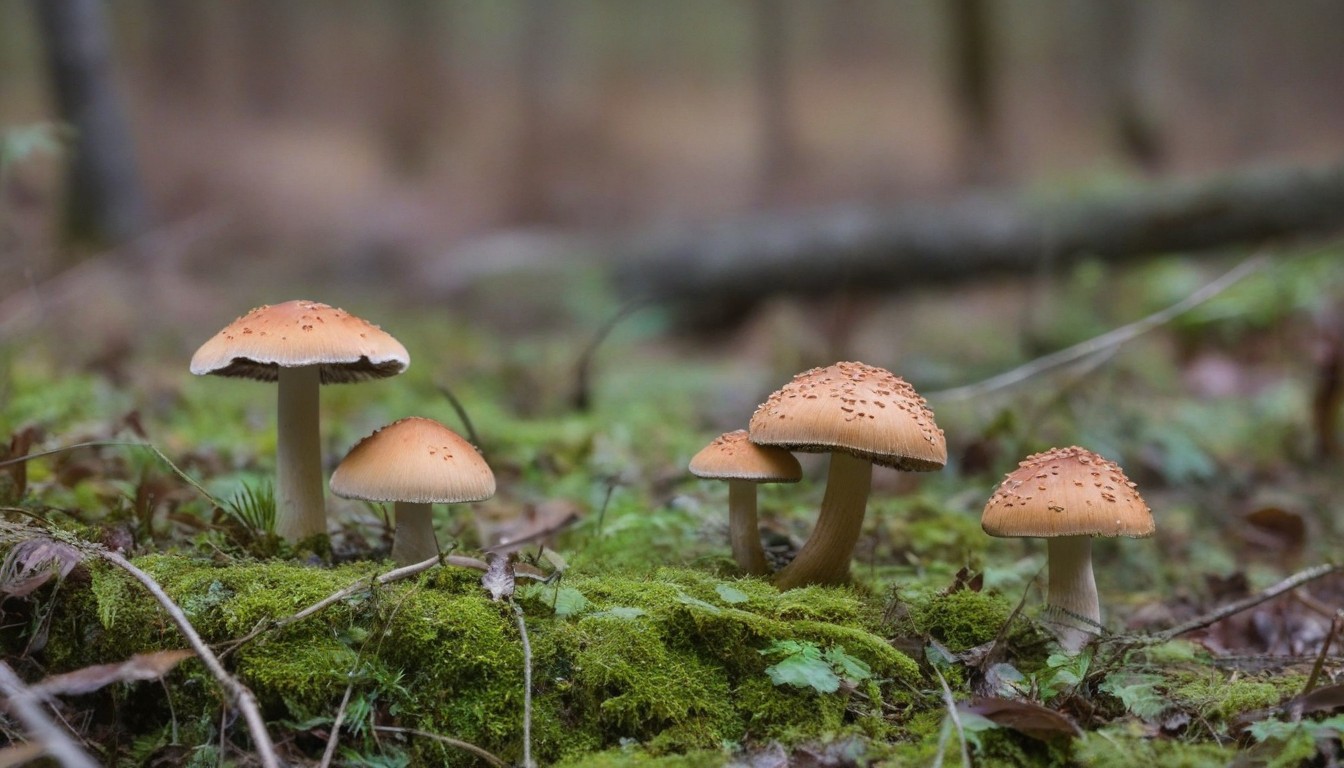
Foraging for edible mushrooms is an enjoyable and rewarding experience, but it’s essential to familiarize yourself with the foraging basics before setting out into the woods. With these crucial tips, you can ensure a safe and successful foraging adventure.
Rules for Foraging
When foraging, always respect the environment and follow the rules to ensure sustainable practices. Here are some important rules to keep in mind:
- Obtain permission from landowners before foraging on private property.
- Stay on designated trails and paths and avoid damaging the plant and animal habitats.
- Leave some mushrooms behind to ensure the growth and sustainability of the mushroom population.
- Do not pick mushrooms that are too young or too old.
Safety Tips
Foraging can be a safe activity if you take the necessary safety precautions. These are some essential safety tips you should follow:
- Be sure to bring a first-aid kit and a fully charged phone in case of an emergency.
- Dress appropriately, wear sturdy boots, and bring insect repellent to avoid ticks and other unwanted insects.
- Carry a mushroom guidebook or a foraging app and ensure you know how to correctly identify the mushrooms you’re picking.
- When in doubt, do not eat a mushroom or feed it to others unless you’re 100% sure it’s safe to consume.
Follow these rules and safety tips, and you’ll be on your way to a successful and enjoyable foraging adventure in Vermont.
Prime Mushroom Foraging Spots in Vermont
If you’re looking for the best mushroom foraging spots in Vermont, look no further. The Green Mountain State boasts a variety of prime locations where you can discover an abundance of edible mushrooms. From the lush valleys to the majestic mountain ranges, each region offers a unique foraging experience.
Mad River Valley
The Mad River Valley is known for its diverse range of mushrooms, including Chanterelles, Hen of the Woods, and the elusive Matsutake. You’ll find these treasures hidden among the hardwood forests and mossy areas.
Mount Mansfield
Mount Mansfield’s alpine tundra offers a completely different foraging experience. Here, you’ll find high-altitude mushrooms such as Alpine Meadow Coral and Alpine Bolete. Keep an eye out for the dwarf birch and willow shrubs, typical habitat for these delicate species.
Northeast Kingdom
The Northeast Kingdom is one of the most significant mushroom-producing areas in Vermont, with an abundance of delicious and nutritious mushrooms such as King Boletes and Morels. You’ll find these mushrooms in the lush forests and rich, loamy soils of the region.
Location | Featured Species |
|---|---|
Mad River Valley | Chanterelles, Hen of the Woods, Matsutake |
Mount Mansfield | Alpine Meadow Coral, Alpine Bolete |
Northeast Kingdom | King Boletes, Morels |
When foraging in Vermont, always obtain permission from landowners before setting foot on private property. Ensure you have the proper equipment, including a mushroom knife, and utilize sustainable foraging practices to protect the natural habitat.
Common Edible Mushrooms in Vermont
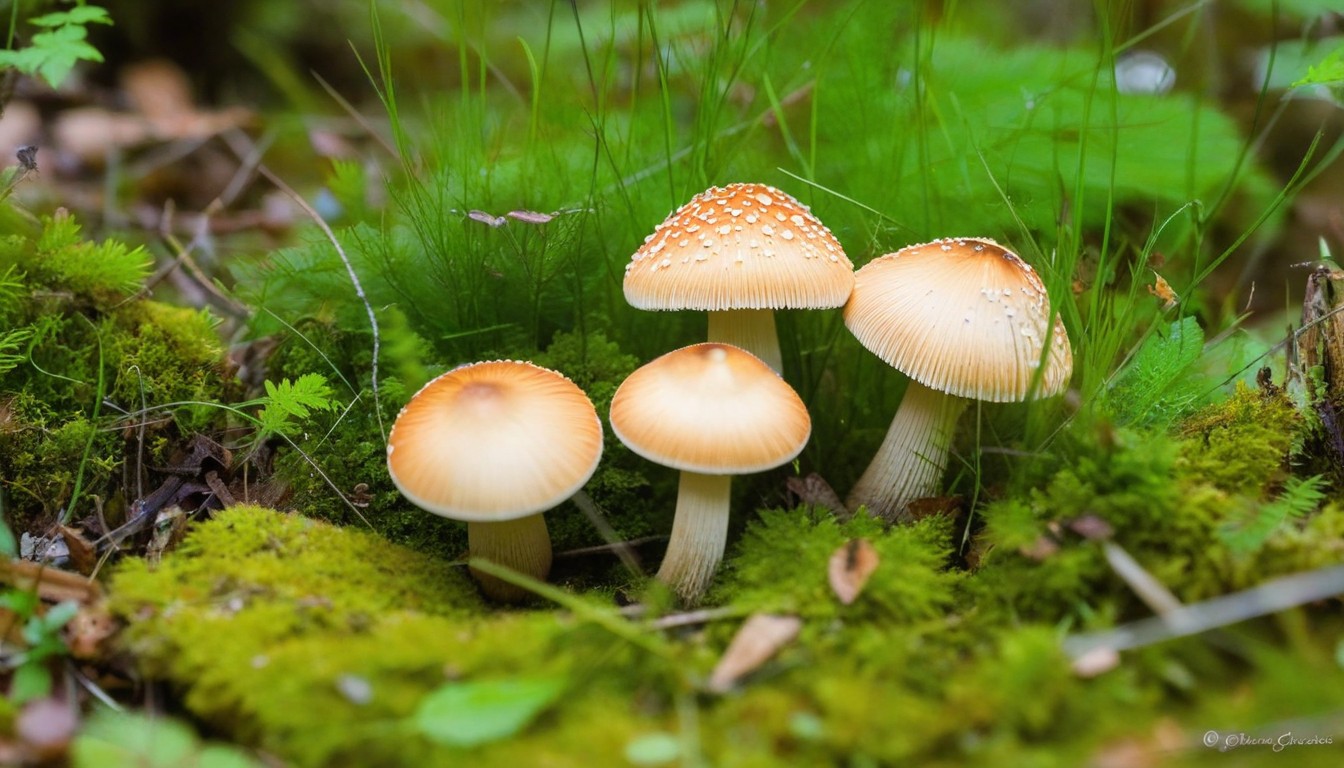
Vermont is home to a variety of common edible mushrooms that are not only delicious but also nutritious. Let’s take a closer look at some of the most highly prized.
Mushroom | Identification | Characteristics | Culinary Uses |
|---|---|---|---|
Chanterelles | Concave, funnel-shaped cap with wavy or smooth edges, yellow to orange color. | Delicate, fruity aroma, mild and slightly sweet taste. | Great for sautéing, frying, in soups or stews. |
Morels | Conical cap with ridges and pits, brownish or tan color. | Earthy and nutty flavor, firm texture. | Best when sautéed, grilled, or roasted to bring out their unique flavor. |
Black Trumpet | Trumpet-shaped cap, black to dark brown color. | Earthy, rich flavor, and a meaty texture. | Use in sauces or sautéed with vegetables and served as a side dish. |
Hen of the Woods | Fan-shaped cap with ruffled edges, light to dark brown color. | Strong, savory flavor, tender and juicy texture. | Can be grilled, roasted or sautéed for a sumptuous meal. |
In addition to these delectable and widespread types of mushrooms, you may also find other varieties such as porcini, oyster, and shiitake, among others, depending on the season and location. However, it’s crucial to be cautious and aware of the potential presence of toxic and non-edible mushrooms. Always verify the identification of the mushroom before consuming.
Now that you know some of the commonly found edible mushrooms in Vermont and their culinary applications, you’re ready to put your foraging skills to the test. Remember to observe sustainable foraging practices to preserve the natural richness of Vermont’s forests and to ensure a bountiful harvest in the years to come.
Wild Mushroom Poisoning: Identifying Toxic Varieties
As exciting as foraging for wild mushrooms can be, it’s important to proceed with caution. Every year, there are cases of wild mushroom poisoning, which can range from mild stomach discomfort to severe illness or death. Therefore, it’s crucial to be able to identify toxic varieties and distinguish them from edible ones.
The first step in identifying toxic mushrooms is to learn about their physical characteristics. Some toxic mushrooms have bright colors or distinct smells, while others have unique features like spores or gills. It’s important to note that some toxic varieties can resemble edible ones, so when in doubt, it’s best to err on the side of caution and avoid picking it altogether.
To help with identification, here are a few examples of toxic mushrooms found in Vermont:
Mushroom | Toxicity | Symptoms |
|---|---|---|
Destroying Angel | Deadly | Vomiting, diarrhea, abdominal cramps, liver and kidney failure |
False Morel | Potentially deadly | Headache, nausea, vomiting, dizziness |
Panther Cap | Deadly | Abdominal cramps, vomiting, diarrhea, coma, death |
If you or someone you know suspects wild mushroom poisoning, seek medical attention immediately. Poisoning symptoms can vary depending on the type of mushroom, and some may not manifest for several hours or even days.
By learning about the toxic varieties and taking precautions while foraging, you can safely enjoy the delicious flavors of Vermont’s edible mushrooms.
Cooking and Preserving Vermont’s Edible Mushrooms
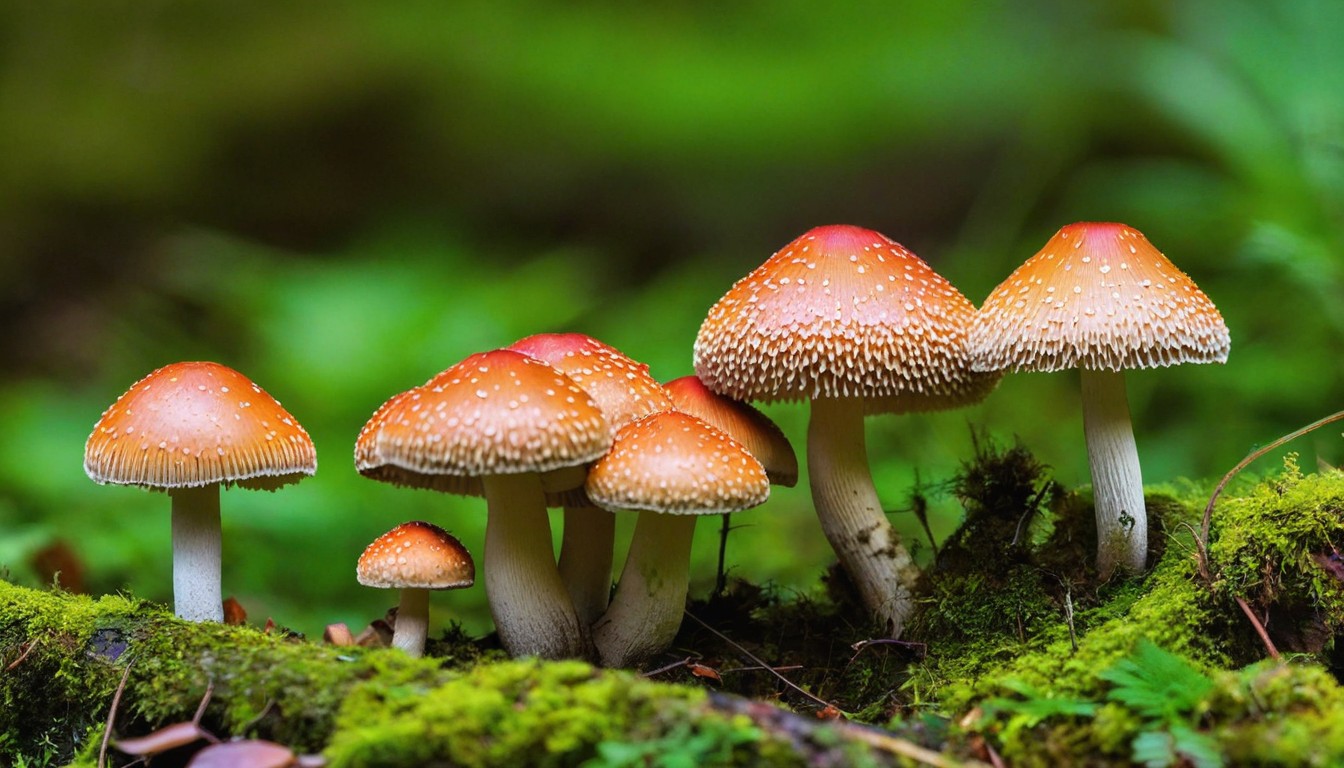
After a successful foraging trip, it’s time to turn your fresh mushroom haul into delectable dishes. Whether you’re a seasoned chef or a novice cook, there are plenty of cooking techniques that can showcase the unique flavors of Vermont’s edible mushrooms.
Sautéing: One of the most popular ways to cook mushrooms is to sauté them with butter or olive oil. Sautéing exposes the mushrooms to high heat, allowing the natural sugars to caramelize, resulting in a rich, nutty flavor. Add herbs like thyme or rosemary to elevate the taste further.
Braising: For tougher mushrooms like lions mane, braising can be an excellent technique. This involves a slow-cooking process in a covered pot with liquid. Whether it’s beer, cider, or broth, braised mushrooms make for an ideal dish on cold winter evenings.
Pro-tip: mushrooms release a lot of water during cooking, so be sure to use high heat initially to sear the mushrooms and evaporate the excess moisture.
Preserving mushrooms can be a great way to preserve your foraged treasures. Here are a few methods:
Preservation Method | Description |
|---|---|
Drying | Drying mushrooms can be done in a dehydrator or the oven and it can last for up to 6 months. Re-hydrate dried mushrooms in hot water before use; this ensures optimal texture and flavor. |
Pickling | Pickling is an easy way to preserve mushrooms for future use. The pickling process involves soaking mushrooms in vinegar, salt, and other herbs and spices. The result is a sweet and tangy pickle that can be enjoyed raw or cooked. |
Freezing | For a quick and easy preservation technique, freeze your mushrooms in a single layer on a baking sheet, then transfer to freezer bags. Frozen mushrooms can be used in a variety of dishes with little loss of flavor and texture. |
Experiment with different cooking and preservation techniques to get the most out of your foraged mushrooms. They’re versatile and full of flavor, so you’re sure to find a recipe you love.
Celebrated Mushroom Recipes from Vermont
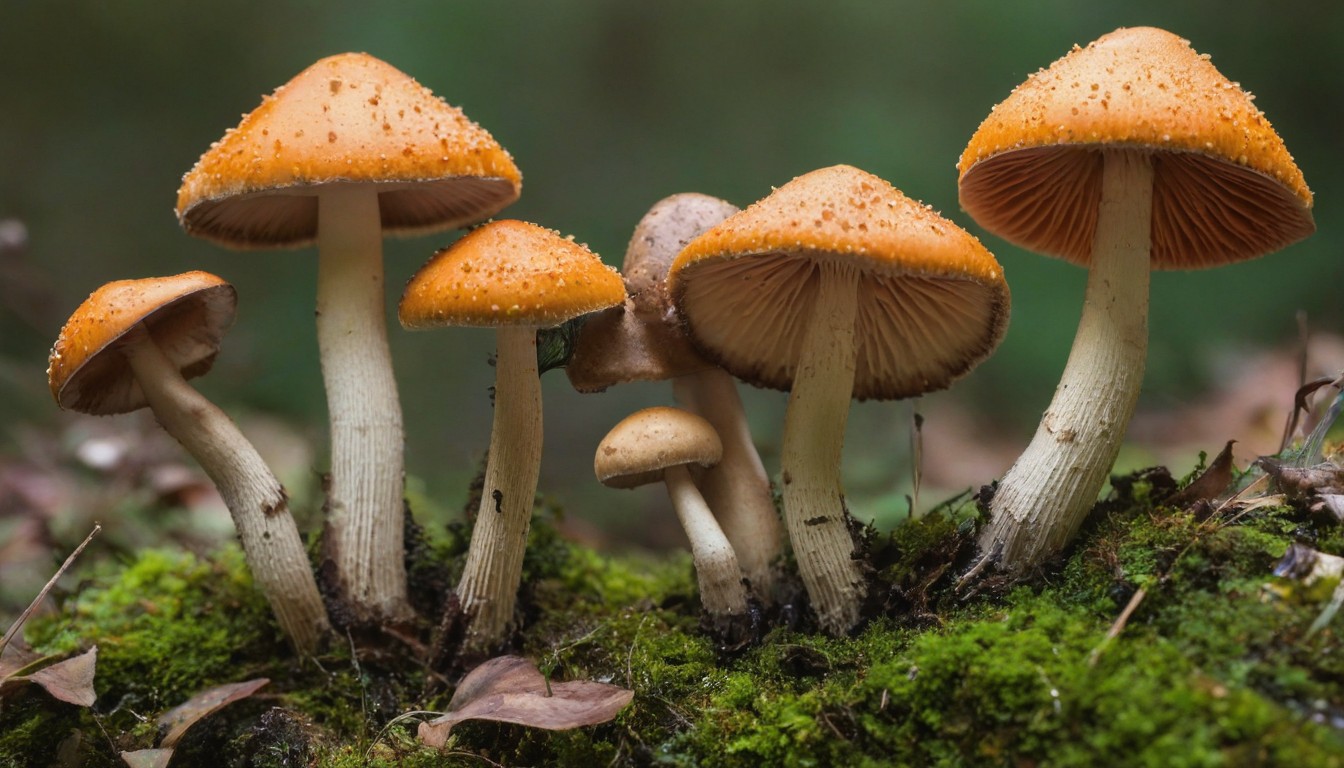
Get ready to tantalize your taste buds with our unique collection of mushroom recipes sourced from the lush forests of Vermont. With countless species to choose from, we’ve prepared a variety of savory and delectable dishes.
1. Vermont Wild Mushroom Soup
“Thick, smooth and flavorful – this mushroom soup is the ultimate comfort food. The wild mushrooms and thyme make for a delicious combination. A must-try!”
Ingredients: | Wild mushrooms, onion, garlic, thyme, vegetable broth, heavy cream, salt, and black pepper. |
|---|---|
Directions: | Roughly chop mushrooms, onions, and garlic. Sauté in butter until soft. Add thyme, vegetable broth, cream, salt, and pepper. Let simmer for 20-30 minutes. Use a blender to purée the mixture until smooth. Serve with fresh herbs and crusty bread. |
2. Vermont Mushroom Risotto
“This creamy and flavorful risotto is a perfect way to enjoy the rich taste of mushrooms from Vermont. Simply delicious!”
Ingredients: | Arborio rice, garlic, onion, butter, white wine, vegetable broth, wild mushrooms, Parmesan cheese, salt, and black pepper. |
|---|---|
Directions: | Cook Arborio rice according to package directions. In a separate pot, sauté garlic, onion, and butter. Once soft, add white wine, vegetable broth, and wild mushrooms. Let simmer until the mushrooms are fully cooked. Mix the mushroom mixture into the cooked rice, add Parmesan cheese, salt, and pepper. Serve warm with chopped parsley. |
3. Mushroom and Goat Cheese Tart
“This savory tart, made with fresh mushrooms and tangy goat cheese, is a perfect addition to any meal. Everyone raves about it!”
Ingredients: | Butter, flour, salt, cold water, olive oil, onion, mushrooms, goat cheese, salt, and black pepper. |
|---|---|
Directions: | Make a pie crust by mixing butter, flour, salt, and cold water until it forms a dough. Roll out the dough and place it into a greased tart pan. In a separate pan, heat olive oil, onion, and mushrooms until they are soft. Mix the goat cheese into the mushroom mixture and pour it into the prepared tart. Bake in a preheated oven at 375°F for 30-35 minutes. Let cool for 10 minutes before serving. |
We hope these mouthwatering mushroom recipes inspire you to explore the rich flavors of Vermont in your own kitchen. Happy cooking!
Mushroom Foraging Events and Workshops in Vermont
Join the mushroom foraging community in Vermont and take part in exciting events, workshops, and guided tours. Connect with like-minded nature enthusiasts and expand your knowledge of mushrooms, foraging, and sustainable practices.
Some upcoming events and workshops in Vermont include:
Event/Workshop Name | Date and Time | Location |
|---|---|---|
Autumn Mushroom Foray | September 25th, 10am-2pm | Green Mountains, Waterbury |
Wild Edibles Walk and Talk | October 2nd, 1pm-3pm | Mad River Valley |
Mushroom Cultivation Workshop | October 15th-16th, 10am-4pm | Northeast Kingdom |
Don’t miss out on these incredible opportunities to learn from experts and enjoy the beauty of Vermont’s outdoors. Book your spot today and embark on an unforgettable mushroom foraging adventure!
Sustainable Foraging Practices in Vermont
Foraging for wild mushrooms can be a thrilling experience filled with exciting discoveries and delicious culinary creations. However, it’s essential to practice sustainable foraging techniques to preserve Vermont’s natural environment and ensure a thriving ecosystem for generations to come.
The principles of sustainable foraging involve respecting the natural habitat, using ethical harvesting practices, and leaving no trace. When foraging for wild mushrooms, it’s crucial to avoid damaging the forest floor, disturbing wildlife habitats, or taking more than you need.
One key practice is to harvest selectively by only picking mature mushrooms and leaving behind younger specimens. This ensures that the mushrooms’ spores can disperse and propagate, leading to a more abundant and diverse mushroom population in the future.
Another crucial principle is to know the state and local regulations on foraging. Many regions have specific rules for harvesting wild mushrooms, and it’s important to follow these guidelines to avoid damaging delicate ecosystems. Additionally, foraging on private property is illegal without permission from the landowner.
Sustainable Foraging Practices
Practice | Description |
|---|---|
Selective Harvesting | Only pick mature mushrooms, leaving behind younger specimens to ensure propagation of spores and population growth. |
Ethical Harvesting | Harvest wild mushrooms in a way that respects the environment and wildlife habitats by avoiding damage to the forest floor and surrounding ecosystems. |
Leave No Trace | Ensure no evidence of foraging remains, including discarded mushroom stems and other litter. Avoid causing any damage to the environment during foraging excursions. |
Know the Regulations | Familiarize yourself with the state and local regulations on foraging, follow the guidelines to avoid damaging delicate ecosystems, and respect private property. |
By following sustainable foraging practices, Vermonters and visitors alike can enjoy the thrill of discovering edible mushrooms while nurturing the environment. Through responsible practices, we can protect and preserve Vermont’s natural heritage for future generations of foragers and forest enthusiasts.
Conclusion
Vermont is a paradise for mushroom foragers with its abundant variety of edible mushrooms and captivating natural scenery. We hope this guide has given you a better understanding of the fascinating world of edible mushrooms, foraging basics, prime mushroom foraging spots, and common mushrooms found in Vermont.
Remember to always forage responsibly and respect nature. Stay safe by following the foraging rules and safety tips outlined in this guide. Be cautious and aware of the difference between toxic and non-toxic varieties.
Once you’ve gathered your foraged treasures, unleash your creativity in the kitchen with our cooking techniques and preservation methods. Our collection of celebrated mushroom recipes will excite your taste buds and impress your friends and family.
Immerse yourself in the vibrant Vermont mushroom foraging community by attending upcoming events, workshops, and guided tours. Connect with nature enthusiasts and expand your knowledge of edible mushrooms and Vermont’s natural environment.
Remember to embrace sustainable foraging practices to protect and preserve Vermont’s natural beauty for future generations. With the knowledge gained from this guide, you’re ready to embark on your own foraging adventure and uncover the culinary treasures hidden within the Green Mountain State. Happy foraging!
FAQ
What is this guide about?
This guide is a comprehensive forager’s guide to Vermont edible mushrooms. It will provide you with valuable information about the various types of edible mushrooms found in Vermont and their culinary uses.
Why should I be interested in foraging for edible mushrooms?
Foraging for edible mushrooms can be a rewarding and enjoyable outdoor activity. It allows you to connect with nature, learn about different mushroom species, and harvest fresh and nutritious ingredients for cooking.
Are all mushrooms in Vermont safe to eat?
No, not all mushrooms in Vermont are safe to eat. It is crucial to properly identify edible mushrooms and distinguish them from toxic varieties. This guide will provide tips on identifying safe edible mushrooms and avoiding poisonous ones.
Where are the best mushroom foraging spots in Vermont?
Vermont offers numerous prime mushroom foraging spots, from valleys to mountain ranges. The guide will highlight some of the best locations where you’re likely to find an abundance of edible mushrooms.
How can I ensure a safe foraging experience?
Safety should be a top priority when foraging for edible mushrooms. The guide will provide essential foraging basics, rules, and safety tips to help you have a safe and enjoyable foraging experience.
What are some common edible mushrooms I can find in Vermont?
Vermont is home to a variety of common edible mushrooms, such as Chanterelles and Morels. This guide will delve into the identification, characteristics, and culinary uses of these mushrooms.
How can I cook and preserve Vermont’s edible mushrooms?
Once you’ve foraged your edible mushrooms, the guide will provide you with cooking techniques and preservation methods to make the most of your harvest. Explore the culinary possibilities and enjoy the flavors of Vermont’s edible mushrooms.
Do you have any mushroom recipes from Vermont to share?
Yes, the guide includes a collection of celebrated mushroom recipes from Vermont. From soups to entrées, these recipes will allow you to savor the unique flavors of Vermont’s edible mushrooms.
Are there any mushroom foraging events or workshops in Vermont?
Vermont has a vibrant mushroom foraging community, and the guide will provide information about upcoming foraging events, workshops, and guided tours. These events are an excellent opportunity to connect with fellow foragers and expand your knowledge.
How can I practice sustainable foraging in Vermont?
As responsible foragers, it’s important to follow sustainable foraging practices to protect Vermont’s natural environment. The guide will introduce you to the principles of sustainable foraging and how you can contribute to the long-term health of the forests.

